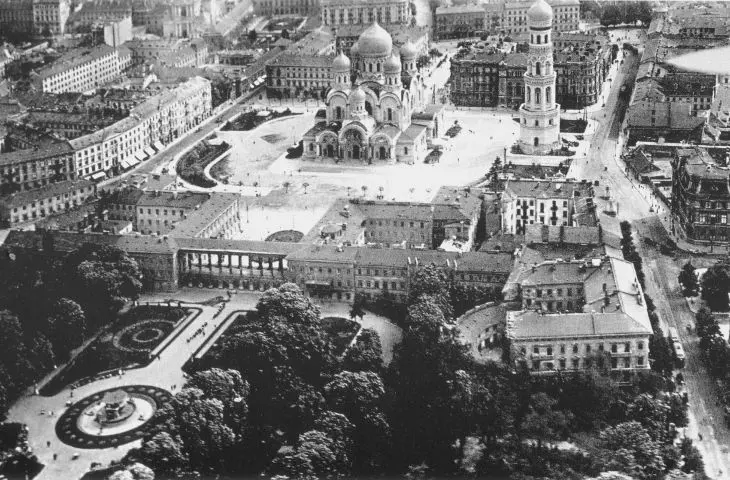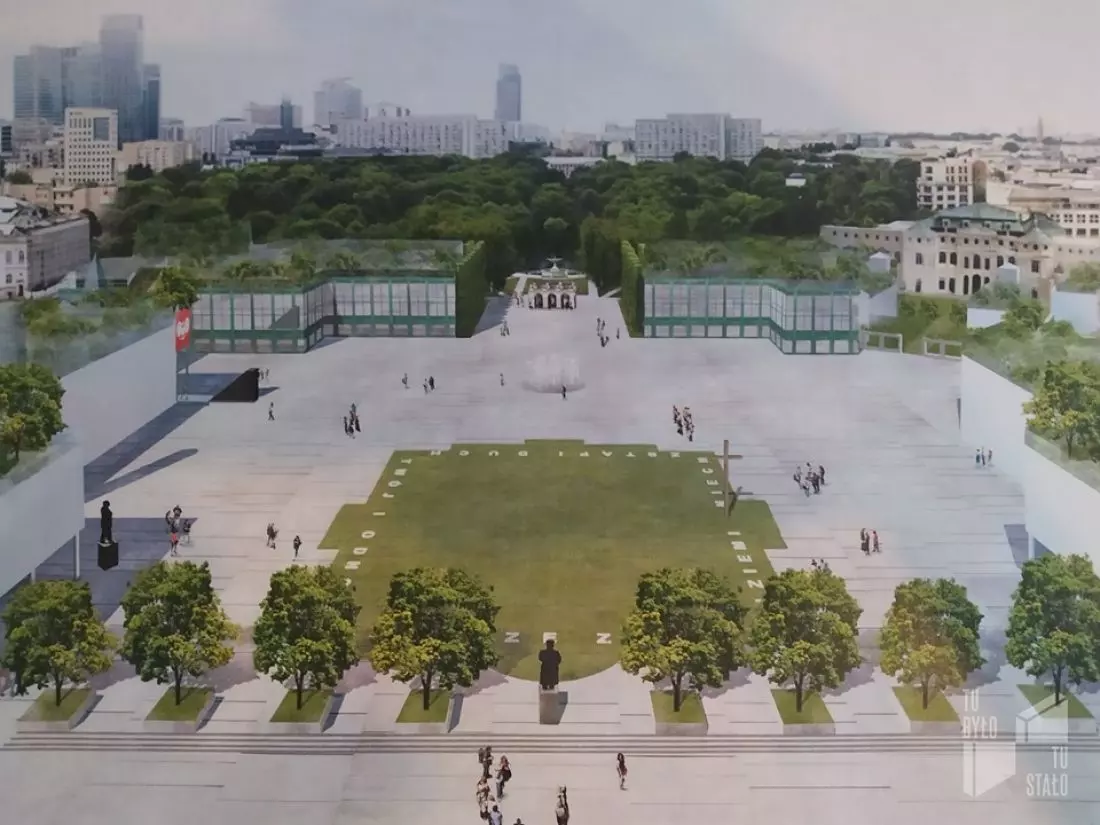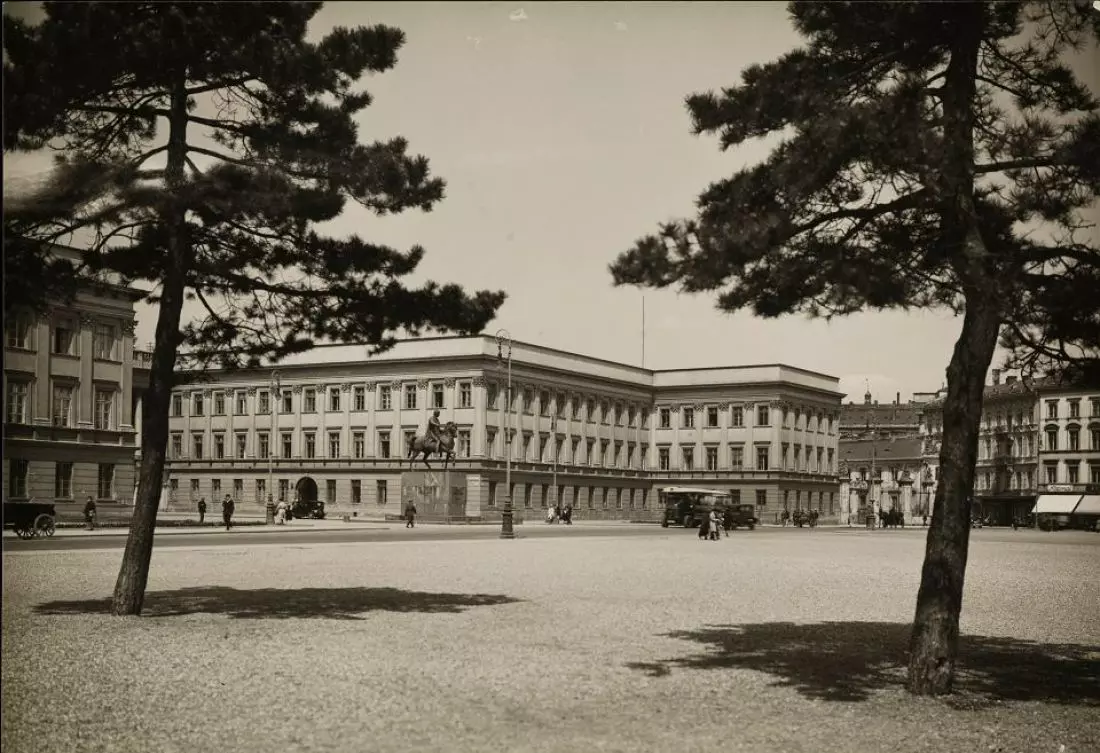In recent days, the atmosphere around the controversial speculation on the reconstruction of the Saski Palace in Warsaw has been getting hotter and hotter. Architecture experts Grzegorz Piątek, Marta Leśniakowska and Andrzej Palys have sent an open letter to President Andrzej Duda, in which they strongly oppose the bill. Their concern is not only with the very concept of the palace's reconstruction and its costs, but also with the express pace at which the bill was drafted. The bill went back to the Culture and Media Committee, which addressed, among other things, the experts' concerns.
Recall that the bill in question is the "Act on the Preparation and Implementation of Investments in the Reconstruction of the Saxon Palace, the Brühl Palace and the townhouses on Królewska Street in Warsaw," which provides for the reconstruction of the buildings. They were destroyed during World War II. Only the Tomb of the Unknown Soldier has survived. For 77 years, there were no systematic attempts to rebuild the palace, only discussions among architects, who proposed various concepts for rebuilding the building.
Prof. Marek Budzyński's concept for the reconstruction of the Saski Palace
© Marek Budzyński / here it was here it stood
Concrete steps were taken under the current government, which prepared the aforementioned project. Kacper Kępinski wrote about it in detail in the pages of A&B in the article "A special law will make it possible to rebuild the Saski Palace."
The plan to rebuild the edifice, which Culture Minister Piotr Glinski claimed is a matter of Polish identity, cultural and historical heritage, is part of the government's "New Deal" programs.
On July 7, President Andrzej Duda published a bill for the reconstruction of the Saxon Palace, which immediately provoked critical comments from experts. They referred not only to the concept of reconstruction (including the allocation of the newly built facilities to the needs of the Senate Chancellery and the Mazovian Provincial Office in Warsaw, as well as to the needs of other entities conducting cultural, educational or socially useful activities), but also to the estimated cost of the investment. The reconstruction of the Saxon Palace is expected to cost nearly PLN 2.5 billion, take 10 years, and be carried out by a specially established company. The provisions of the law do not explain why such a high amount.
Controversy is also aroused by, among other things, the planned expropriation of the city from the land for the reconstruction, as well as provisions that are to "exempt" the investment at Pilsudski Square from the supervision of the conservator of historical monuments and construction law. Read more in the article "A new company and billions of zlotys in a speculative bill to rebuild Saski Palace."
Archival photo of the Saski Palace
© Polona
open letter against the special law
We did not have to wait long for an official gesture of opposition from the architectural community. Grzegorz Piątek - an architecture critic, Marta Leśniakowska and Andrzej Pałys - architectural historians wrote an open letter to the president, in which they oppose the reconstruction of the Saski Palace in such a formula. They are also directing the letter to the Prime Minister, the Speakers of the Sejm and the Senate and the President of Warsaw. Dozens of people from the architectural, cultural and scientific communities have already signed the letter.
It is with great concern that we observe the pursuit of the state authorities to reconstruct the Saski Palace and the western frontage of Pilsudski Square. Under the slogans of continuing or completing the work of postwar reconstruction, the fundamental values of the place's unique heritage, symbolic and spatial, led by one of the most valuable monuments in the country - the Tomb of the Unknown Soldier - have been threatened. And the authoritarian methods used to achieve this goal offend the basic principles of democracy and the rule of law , the letter's authors write.
They also claim that the implementation of the speculation on the reconstruction of the Saxon Palace means the destruction of the current form of the Tomb of the Unknown Soldier, the last permanent ruin in the center of Warsaw. In his opinion, it is not only a monument to heroes, but also a symbol of pacification; a monument of high historical value for the country. Experts are also concerned about the fact that the specustlaw is being "pushed through" in an express mode.
Why the rush? Is it to get the stadium built in time for the Olympics? Rocket launchers for the coming war? A hospital for the next wave of epidemics? No. It's about satisfying the luxurious need of a handful of amateurs of pre-war Warsaw and the interests of politicians, building a mock-up of a monument in which it's not even clear what exactly will be housed," commented Grzegorz Piątek.
The authors of the letter also claim that those in charge of the shape of the speculative law do not see the needs of modern Polish society in terms of the reconstruction of historical buildings.
The reconstruction of the capital's monuments closed within four decades. The culmination of this work was the Royal Castle, which was reconstructed using not only the available documentation, but also the knowledge of the living generations of architects, conservators, artists, craftsmen who remembered these monuments from before the war very well, and often participated in their rescue during the occupation. Their memory was accompanied by a phenomenal knowledge of traditional conservation and construction techniques. All of this led to Warsaw's restoration work being crowned in 1980 with the entry of the Old Town on the UNESCO World Heritage List. The uniqueness of this entry, contrary to the prevailing conservation doctrines, was justified by the genuine social need to restore the destroyed city to its inhabitants. Today, in the third decade of the 21st century, social needs are quite different , they write.
Ignoring real public debate, city authorities and, finally, democratic procedures, using specs written in the privacy of offices, we associate them with the historical arrogance of the powers of the partitioners and occupiers, who sought to dominate the space of the square - erecting a monument to Polish officers loyal to the tsar, a cathedral council, a Nazi victory monument. Our objection is also to the huge cost of reconstruction. Not only in Warsaw, but all over Poland, authentic monuments - palaces, mansions, townhouses, cemeteries - need urgent help. The amount of more than PLN 2.4 billion would save about a thousand historic buildings. In our opinion, such an action would have much more to do with caring for heritage and history than constructing modern, psedo-sacred copies of long-defunct buildings ," it reads further.
Among those who have so far signed the letter of objection are.: art historian Waldemar Baraniewski, architect Andrzej Bulanda, writer Max Cegielski, journalist Beata Chmiel, writer Sylwia Chutnik, art historian Anna Cymer, architect Maciej Czarnecki, writer Agnieszka Drotkiewicz, art historian andexhibition curator Tomasz Fudala, writer Mikołaj Grynberg, director Agnieszka Holland, architecture historian Lidia Klein, director Jan Komasa, Holocaust researcher Jacek Leociak, art historian Małgorzata Omilanowska, writer andtranslator Piotr Pazinski, art historian and critic Anda Rotenberg, art historian and curator Piotr Rypson, writer Filip Springer, president of the Bęc Zmiana Foundation Bogna Świątkowska, director and director of Teatr Nowy Krzysztof Warlikowski, set designer Krystyna Zachwatowicz-Wajda and many others.
project returns to culture committee
Shortly after the publication of the letter, on Wednesday, July 21, the Sejm considered the report of the Culture and Media Committee on the draft speculative law. Amendments were submitted during the second reading, hence the Sejm referred the project back to the committee.
At the time,Piotr Babinetz, chairman of the committee, reported that one amendment had been made during the committee's work, or more precisely: the composition of the reconstruction council had been increased.
We added a representative of the Warsaw City Council and a representative of the Sejm ," Babinetz said.
Secretary of State Malgorzata Paprocka, meanwhile, referred to expert concerns about damage to the Tomb of the Unknown Soldier, as well as Saski Park, in the results of the palace reconstruction project.
The Tomb of the Unknown Soldier as it is today will remain intact. The Saski Palace is to be rebuilt according to its shape of August 31 , 1939 ," she said.
She assured that Saski Park will not be destroyed as a result of the reconstruction. According to the law, the Mazovian governor will be able to order the replanting of trees or the making of plantings in the same number - a maximum of a few dozen trees, as determined by the outline of the plots. She added that there are also no technical obstacles to reconciling the construction of underground parking lots with the preservation of historic basements.
Paprocka also referred to allegations of non-compliance with the "Public Procurement Law and the Law on Historic Preservation."
The only exemption to the Public Procurement Law concerns the designation of a special-purpose company as an investor, while the project does not assume an exemption to the Public Procurement Law in the execution of the investment , she explained.
{AuthorAiB}
















